Characteristics and cultivation of a variety of roses "Salita"
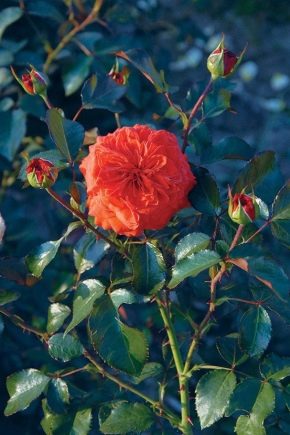
For many centuries, scarlet roses have enjoyed an impressive and well-deserved popularity as a magnet, attracting enthusiastic glances. This thesis is also true for "Salita" - a variety cultivated by an increasing number of domestic gardeners. The decorative characteristics and unpretentiousness of the described variety make it possible to recommend it to anyone who wants to effectively decorate the local area with a moderate investment of time and effort.

Peculiarities
The climbing rose in question appeared thanks to the efforts of breeders of the famous German company "Wilhelm Cordes and Sons" in 1987. Experts attribute "Salita" to the group of climbers, which allows one to be convinced of the description of its features, namely:
- a sprawling bush, the height of which reaches 2.5–3 m, and the width is 1.5 m;
- double scarlet flowers with an orange or coral tint;
- long and strong shoots;
- flower diameter - 8-9 cm;
- large dark green leaves with a clearly visible sheen;
- the number of flowers on the stem is 2–5;
- growing area - V (USDA);
- flowering nature - continuous;
- aroma - fruity, unobtrusive;
- the number of petals on a flower is no more than 40.
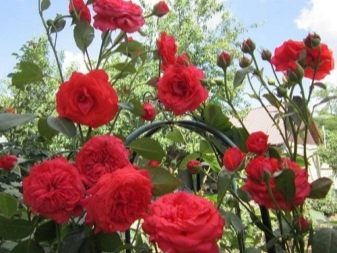
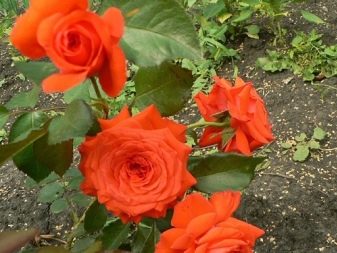
Also noteworthy is the shape of the buds of the presented plant, which is characteristic of hybrid tea varieties.
Advantages and disadvantages
One of the main advantages of the Salita rose is the bright and rich color of its flowers, thanks to which the bush resembles a raging flame. As for the other advantages of the plant in question, it is worth noting the following:
- pronounced doubleness of flowers, meeting the expectations of most aesthetes;
- the ability to use in cutting;
- good winter hardiness, allowing you to endure frosts down to -26 ° C, provided that a high-quality shelter is arranged;
- long and profuse flowering, affecting different levels of the bush;
- resistance to invasions of parasites;
- undemanding care, thanks to which the cultivation of "Salita" is within the power of the overwhelming majority of gardeners;
- resistance of flowers to heavy rain.


The only noticeable drawback of the rose in question is the relatively low rate of shoot development, which is especially noticeable in regions with a cool climate.
Seat selection
Despite its love for light, "Salita" does not tolerate direct sunlight. The latter lead to fading of flowers and the appearance of burns, which is why the plant should be placed in partial shade. The second condition contributing to the accelerated development of the rose is fertile and breathable soil on the site, which has a weakly acidic reaction (pH from 5.6 to 6.5). If the soil lacks lightness, it is mixed with sand, compost, peat and humus, and a combination of clay and turf soil is used to make it heavier. In addition, it is worth protecting the plant from the harmful effects of excess moisture, avoiding places of its accumulation, and stagnation of cold air typical of ravines.
Also worthy of attention is the groundwater level, the permissible values of which for "Salita" are below the meter mark.
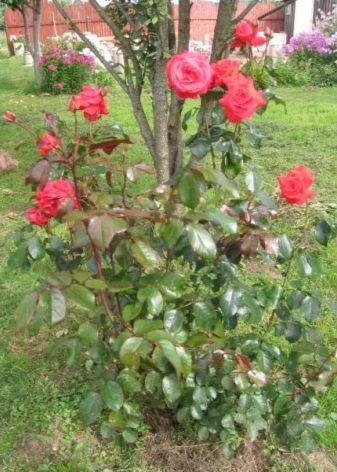

Landing
You can start solving the problem in question in April, May or in the last decade of October. The second option is less preferable, since a young plant needs to have time to take root before frost, which is not always the case.Preparatory measures are carried out a day before planting and involve the removal of damaged areas of the plant's root system. In addition, experts recommend processing the latter with a biostimulant dissolved in water, contributing to the adaptation of a young rose in a new place.

The order of further actions is as follows:
- dig a hole, the depth of which is 40-60 cm and place a drainage layer on its bottom (about 10 cm of gravel or gravel);
- if the owner of the site plants several roses of the described variety, it is advisable for him to maintain a meter distance between them;
- apply organic fertilizers - rotted manure or a combination of mature compost and peat (recommended thickness - 10 cm);
- position the seedling at an angle of 30 ° to the support, gently spread the roots and cover them with soil, carefully compacting it;
- make sure that the root collar is 3 cm below ground level;
- water the young plant thoroughly.

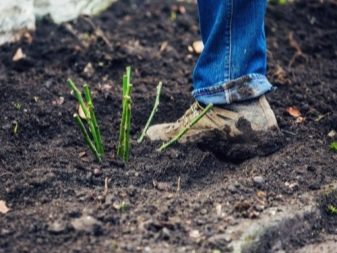
The final stage is mulching the soil with peat in the near-trunk circle.
Care
As practice shows, growing a healthy and beautiful rose "Salita" is an interesting and rather simple task. Based on the feedback from the owners of this plant, it can be argued that it pleases everyone with a lush and bright flowering who follows the basic rules of its agricultural technology.

Watering
Depending on the amount of precipitation, wind strength and temperature, watering of the rose in question can be carried out both every other day and once a week. This procedure should be started after the soil in the near-trunk circle dries 10 cm deep, spending 25 liters of soft water per 1 adult bush. To reduce the rate of evaporation of moisture, the soil must be thoroughly mulched. With the onset of autumn, watering should be gradually reduced, taking into account changing weather conditions.

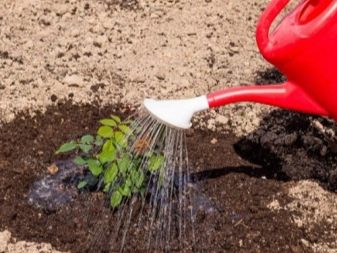
Fertilization
During the first year of a young plant's life, it should be fed monthly with a mixture, which includes the following components:
- mullein and bird droppings dissolved in water (1: 10 and 1: 20, respectively);
- wood ash;
- decoctions of useful herbs.
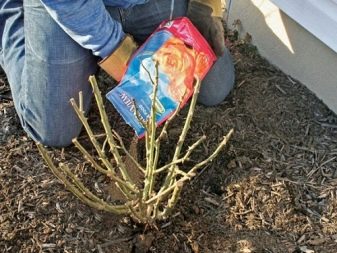

In the future, "Salita" needs fertilizers, the introduction of which is carried out according to the following scheme:
- urea - in early spring;
- ammonium nitrate - after 2 weeks from the moment of the first feeding;
- complex preparations containing boron - at the budding stage;
- organic - just before the start of flowering;
- phosphorus and potash dressings - in the fall to prepare the bush for the upcoming wintering.
In addition, at the end of flowering, re-introduction of boron-containing preparations is allowed.
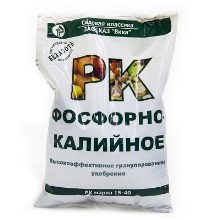


Garter
As mentioned earlier, the Salita variety is characterized by strong shoots. Given this circumstance, such a bush can grow without support, which saves time and effort for its owner. If the rose is grown in a region that is characterized by strong winds, then it is better not to give up the support. Following this advice will minimize the likelihood of damage to productive shoots caused by strong rocking. As for the garter, it must be done carefully, avoiding excessive pressure of the threads on the stems.
Ignoring this recommendation can lead to degradation and death of the latter due to the impossibility of full sap flow.
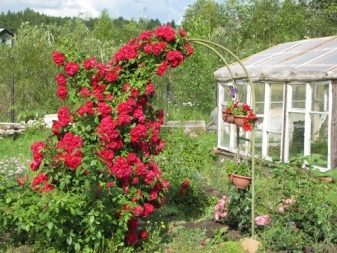
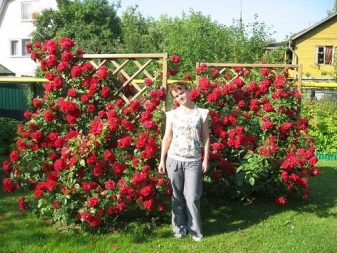
Pruning
During the first year of the life of the Salita rose, it is advisable to get rid of its buds until the beginning of August. This is due to the fact that flowering takes away from a young plant the strength it needs to strengthen and painless wintering. In the future, the bush undergoes minimal pruning while preserving the basal shoots of the first order. Special attention should be paid to plant rejuvenation, which must be carried out, but relatively rarely, as a rule, once every 4 years.

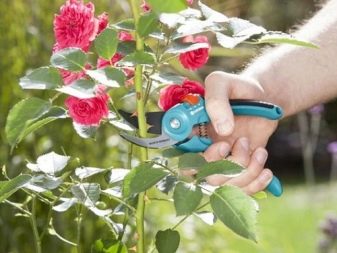
Preparing for winter
Growing "Salita" in the middle lane presupposes the obligatory arrangement of a winter shelter. You need to start solving the problem under consideration after the temperature drops to -7 ° C, following the algorithm below:
- carefully untie the plant from the support;
- place spruce branches between the bush and the ground;
- cover the shoots with the same material (gradually so that they bend without damage);
- build a metal or wooden frame over the covered rose and wrap it in non-woven fabric.
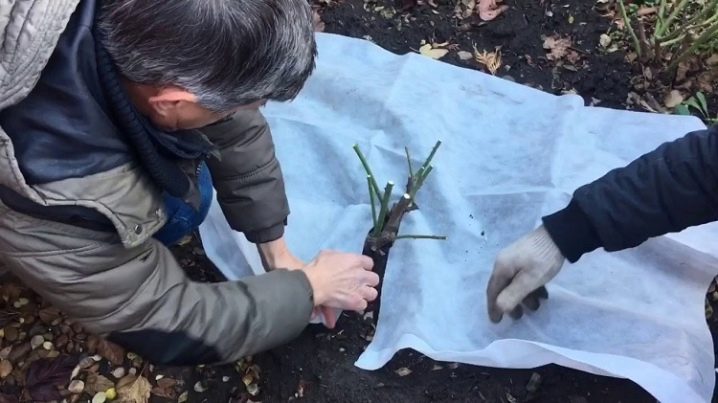
If you cannot bend the strong Salita whips properly, you can only cover the lower part of the rose bush. This solution should be used as a last resort, as it increases the risk of death of unprotected shoots from severe frost. You need to open and disassemble the shelter in the spring, in March or April. After removing the non-woven material and spruce branches, the bush should be given time to straighten itself (as far as possible), and then carefully tie it to the support.
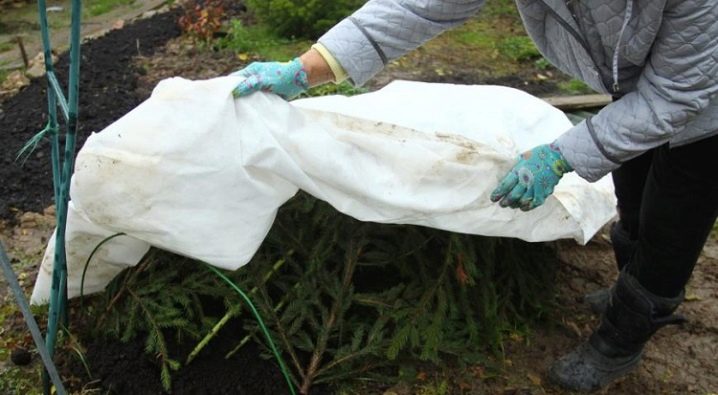
Common diseases
Despite the fact that the described variety is relatively resistant to fungal diseases, in certain cases they can bother him. Most often, the Salita rose suffers from black spot and powdery mildew, which develop due to excess moisture or excessive thickening of the plantings. Effective counteraction to these ailments involves the removal of all affected areas and the treatment of the plant with a systemic fungicide. Preventive measures are carried out twice a season, in spring and autumn. They involve the use of contact fungicides - Bordeaux liquid or copper sulfate.

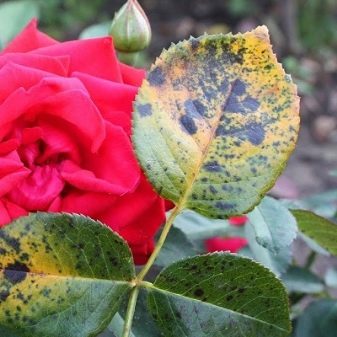
Use in landscape design
First of all, the Salita rose is intended for vertical gardening. Thanks to its impressive decorativeness, it can effectively decorate the wall of a building, fence, arch or gazebo. In addition, this variety looks great on pillars and columns, due to its abundant flowering at several levels. An alternative solution is to position the plant on the lawn. Combinations of "Salita" with ground cover annuals decorated with snow-white flowers look especially advantageous. If the owner of the rose wants to grow it with a scrub, he should create a suitable background from dark green foliage or needles. Given the size and appearance of the bushes of the variety in question, you should not be surprised that they allow you to realize the most daring design ideas. "Salita" suits the overwhelming majority of connoisseurs of beauty and originality, who want to refine their site and admire the result every year.

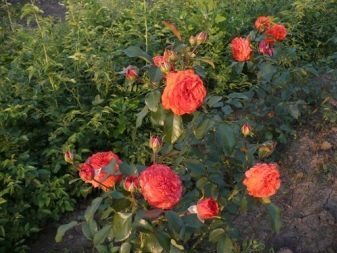
How the Salita rose blooms, see the video below.

































































































The comment was sent successfully.